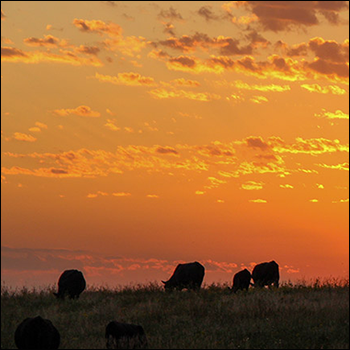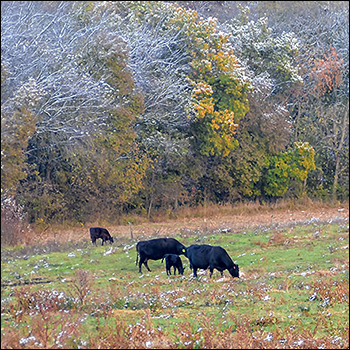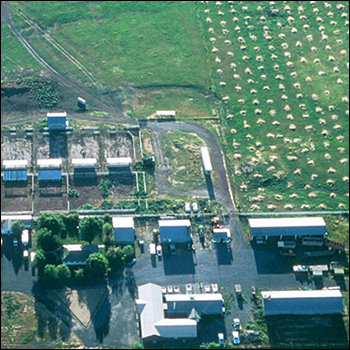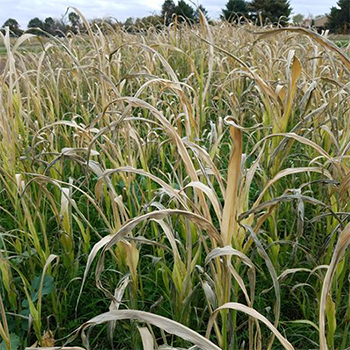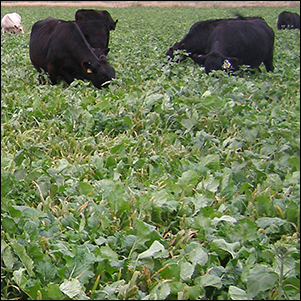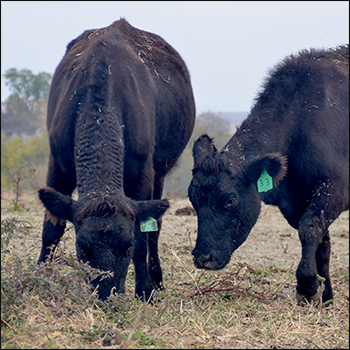
Feeding Outside the Box
Alternative feed options and considerations offered.
Weather has made feeding cows tricky in many parts of the country this year. Traditional feeds are scarce or downright expensive. However, there are often alternatives, according to David Bohnert, beef extension specialist and ruminant nutritionist with Oregon State University and the Eastern Oregon Agricultural Research Center at Burns, Ore.
When hay is expensive, ranchers should look at what else is available locally to keep freight costs low.
“Here in the Northwest, we have a lot of forages that could potentially be used. Some of the nontraditional ones coming into more common use include teff and triticale. These can be cut for hay, or grazed. Teff is a warm-season annual grass, somewhat similar to coastal Bermuda grass,” he says.
Many different alternative feeds are available. However, producers considering a feed source they’re unfamiliar with should always have it tested. |

Onions |

Hops |

Beet pulp |

Mintlage |

Corn gluten |
Other common alternatives in the Northwest include grass-seed straw, distillers’ grains (a good energy/protein supplement) and cornstalks. Vegetable waste from food processing might be available depending on your location, though you need to figure out how to transport and feed it, he says. Cull onions, turnips, potatoes, carrots, dry beans and other vegetables are available in some areas.
“One alternative in our region is grass-seed straw — the aftermath from growing grass seed. If it’s fescue or perennial ryegrass, however, it may contain endophyte fungi, which produce toxins,” he warns. “People who graze pastures or put up hay using these forages often have the same problem, which can occur with any plants that might have ergot alkaloids.”
These can hinder blood circulation to the extremities and, when the weather turns cold, may result in frozen ears, tails or even feet.
“Awhile back, one producer lost 600 cows,” Bohnert shares. “He was feeding fescue grass-seed straw and didn’t have it tested. When weather got cold, the cows froze their feet. When using alternative feeds, be aware of things like potential toxins or contaminants like mold. For example, corn can have deadly aflatoxins, and other feedstuffs are also apt to mold if they get wet.”
Producers considering a feed source they’re unfamiliar with should always have it tested. Distillers’ grains are a good source of energy and protein but can have high sulfur levels, which can cause problems for cattle.
Storage is another issue with some alternative feeds. How will you store a wet feed if it’s not delivered daily? Can it be stored in a grain bin or silo? Distillers’ grains contain fat and tend to bind and bridge in a grain bin, which means someone has to knock it down, which can be dangerous. When choosing a feed you haven’t used before, there are many things to think about, not the least of which is how to feed it.
Turnips or cull potatoes present risk of choking, so you might want to crush them before feeding. Bohnert suggests driving over them with a tractor to break them up.
Distillers’ grain is best fed in troughs to avoid loss, he says. “One producer used old belting to feed on. You could put this along a fence so cattle could only have access to one side. In the Southwest we fed cubes with a feeder on the back of the pickup or trailer that lets the cubes fall on the ground as we drive along. A person could do this with distillers’ grain along a fence on belting to keep it out of the dirt.”
Feedbunks can be inexpensively created by bolting half barrels together, or using old tires, discarded/replaced water troughs, or whatever is available.
Another thing to figure out when using a nontraditional feed is how much to give the cattle. Some alternative feeds can be fed in substantial amounts, while others should be limited because of the fat content or other factors. They should only make up a certain proportion of the diet, but you don’t always know how much.
Since many alternative feeds are not routinely fed, there’s not much data on their nutrient content, and no established criteria for how much to feed, Bohnert warns. They need to be tested for nutrient content, so you can work them properly into a ration. You can ask your extension agent or nutritionist to help you formulate a diet that will be appropriate.
Editor’s note: Heather Smith Thomas is a cattlewoman and freelance writer from Salmon, Idaho. Photos by Shauna Rose Hermel.

